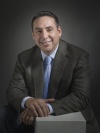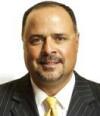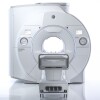Healthcare Chronicles: Ray Stachowiak Shares His Views
February 05, 2009

Healthcare Chronicles
by Ray Stachowiak
This commentary originally appeared in the January 2009 issue of DOTmed Business News.
I've owned Shared Imaging, for about 15 years. Prior to Shared Imaging, I was the Executive VP and CFO for MICA (Medical Imaging Centers of America) Imaging. In all, my industry experience has spanned more than two decades and it has been an exciting ride.
I've seen a lot of changes and today there is an incredible amount of uneasiness facing our industry, not the least of which is our economy. Although the culprits for the current financial storm are apparently the companies and industries who gambled with questionable lending practices and misdirected assumptions, in the end we will all need to pay if we expect to head in the right direction again.
As health care professionals, we do have at least two advantages over other industries dealing with the current fallout. The first is the fact that health care is not rooted in discretionary spending. The second is the DRA cuts.
For discretionary spending, a family may put off buying a bigger house until they feel more financially comfortable or an individual may decide not to get the latest in technology for home entertainment, but the leisure of choice isn't always available for health. People don't choose to get injured or come down with an illness, but it's the job of a medical professional to be there for them when they do.
It may come as a surprise to consider the DRA cuts an advantage. They certainly haven't been friendly to our field, but they have given us a chance to rethink our planning long before the current crisis occurred. It has hurt many in the industry and even pushed some out of business, but those remaining have added volumes of experience to their business savvy.
In the early '90s, there were a lot of small, fast growing companies in the industry that were great to work for. These companies were thriving and offered a great culture. In the late '90s, there was significant consolidation. My company had been part of the early culture and as it grew I worked to keep it grounded and close to our client base. One of our greatest strengths was the fact that we did not need to go public to raise capital to fuel our growth. This meant we could stay focused on our clients instead of the shareholders. I think the biggest distinction that separates a successful company from an unsuccessful one is the ability to listen to and act upon customer needs and concerns.
When I read the news about the U.S. auto manufacturers, I had to wonder if they had ignored customer concerns for too long. Were the supersized SUVs rolling off the line based on customer needs or was the manufacturer telling consumers what they needed? With the current crunch, people have taken a closer look at what they need. When they discovered their needs didn't match up with what the manufacturers had been telling them, it came back to bite those manufacturers.
While the American health care industry could fall into the same trap, I don't believe it will happen. Our system is one of the best in the world in terms of quality and innovation. One of our weaknesses is access to that quality and it'll be interesting to see if that gets resolved in the future. With a new leader coming into office and possible adjustments to the DRA, it's vital that we monitor policy and reimbursement changes. Our government is running a tremendous deficit and at some point that will come to a head. Too many lives depend on our industry; we can't afford not to listen to our customers. Now, more than ever, we must listen to what they need, not tell them what we want them to need.
Raymond C. Stachowiak founded Shared Imaging in 1993. He has served as President and CEO since its inception. Shared Imaging, LLC is a preferred independent provider of CT, MRI and PET/CT equipment and services.
This commentary originally appeared in the January 2009 issue of DOTmed Business News.
I've owned Shared Imaging, for about 15 years. Prior to Shared Imaging, I was the Executive VP and CFO for MICA (Medical Imaging Centers of America) Imaging. In all, my industry experience has spanned more than two decades and it has been an exciting ride.
I've seen a lot of changes and today there is an incredible amount of uneasiness facing our industry, not the least of which is our economy. Although the culprits for the current financial storm are apparently the companies and industries who gambled with questionable lending practices and misdirected assumptions, in the end we will all need to pay if we expect to head in the right direction again.
As health care professionals, we do have at least two advantages over other industries dealing with the current fallout. The first is the fact that health care is not rooted in discretionary spending. The second is the DRA cuts.
For discretionary spending, a family may put off buying a bigger house until they feel more financially comfortable or an individual may decide not to get the latest in technology for home entertainment, but the leisure of choice isn't always available for health. People don't choose to get injured or come down with an illness, but it's the job of a medical professional to be there for them when they do.
It may come as a surprise to consider the DRA cuts an advantage. They certainly haven't been friendly to our field, but they have given us a chance to rethink our planning long before the current crisis occurred. It has hurt many in the industry and even pushed some out of business, but those remaining have added volumes of experience to their business savvy.
In the early '90s, there were a lot of small, fast growing companies in the industry that were great to work for. These companies were thriving and offered a great culture. In the late '90s, there was significant consolidation. My company had been part of the early culture and as it grew I worked to keep it grounded and close to our client base. One of our greatest strengths was the fact that we did not need to go public to raise capital to fuel our growth. This meant we could stay focused on our clients instead of the shareholders. I think the biggest distinction that separates a successful company from an unsuccessful one is the ability to listen to and act upon customer needs and concerns.
When I read the news about the U.S. auto manufacturers, I had to wonder if they had ignored customer concerns for too long. Were the supersized SUVs rolling off the line based on customer needs or was the manufacturer telling consumers what they needed? With the current crunch, people have taken a closer look at what they need. When they discovered their needs didn't match up with what the manufacturers had been telling them, it came back to bite those manufacturers.
While the American health care industry could fall into the same trap, I don't believe it will happen. Our system is one of the best in the world in terms of quality and innovation. One of our weaknesses is access to that quality and it'll be interesting to see if that gets resolved in the future. With a new leader coming into office and possible adjustments to the DRA, it's vital that we monitor policy and reimbursement changes. Our government is running a tremendous deficit and at some point that will come to a head. Too many lives depend on our industry; we can't afford not to listen to our customers. Now, more than ever, we must listen to what they need, not tell them what we want them to need.
Raymond C. Stachowiak founded Shared Imaging in 1993. He has served as President and CEO since its inception. Shared Imaging, LLC is a preferred independent provider of CT, MRI and PET/CT equipment and services.














